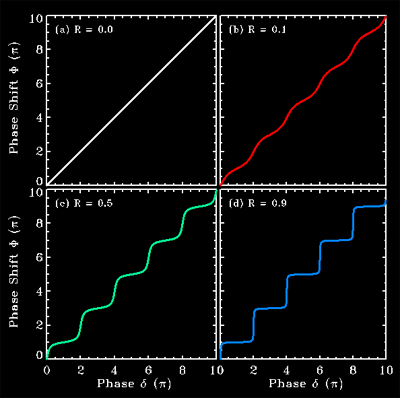Gires–Tournois etalon
In optics, a Gires–Tournois etalon is a transparent plate with two reflecting surfaces, one of which has very high reflectivity. Due to multiple-beam interference, light incident on a Gires–Tournois etalon is (almost) completely reflected, but has an effective phase shift that depends strongly on the wavelength of the light.
The complex amplitude reflectivity of a Gires–Tournois etalon is given by
where r1 is the complex amplitude reflectivity of the first surface,
- n is the index of refraction of the plate
- t is the thickness of the plate
- θt is the angle of refraction the light makes within the plate, and
- λ is the wavelength of the light in vacuum.
Nonlinear effective phase shift

Suppose that is real. Then , independent of . This indicates that all the incident energy is reflected and intensity is uniform. However, the multiple reflection causes a nonlinear phase shift .
To show this effect, we assume is real and , where is the intensity reflectivity of the first surface. Define the effective phase shift through
One obtains
For R = 0, no reflection from the first surface and the resultant nonlinear phase shift is equal to the round-trip phase change () – linear response. However, as can be seen, when R is increased, the nonlinear phase shift gives the nonlinear response to and shows step-like behavior. Gires–Tournois etalon has applications for laser pulse compression and nonlinear Michelson interferometer.
Gires–Tournois etalons are closely related to Fabry–Pérot etalons.
References
- F. Gires, and P. Tournois (1964). "Interferometre utilisable pour la compression d'impulsions lumineuses modulees en frequence". C. R. Acad. Sci. Paris. 258: 6112–6115. (An interferometer useful for pulse compression of a frequency modulated light pulse.)
- Gires–Tournois Interferometer in RP Photonics Encyclopedia of Laser Physics and Technology